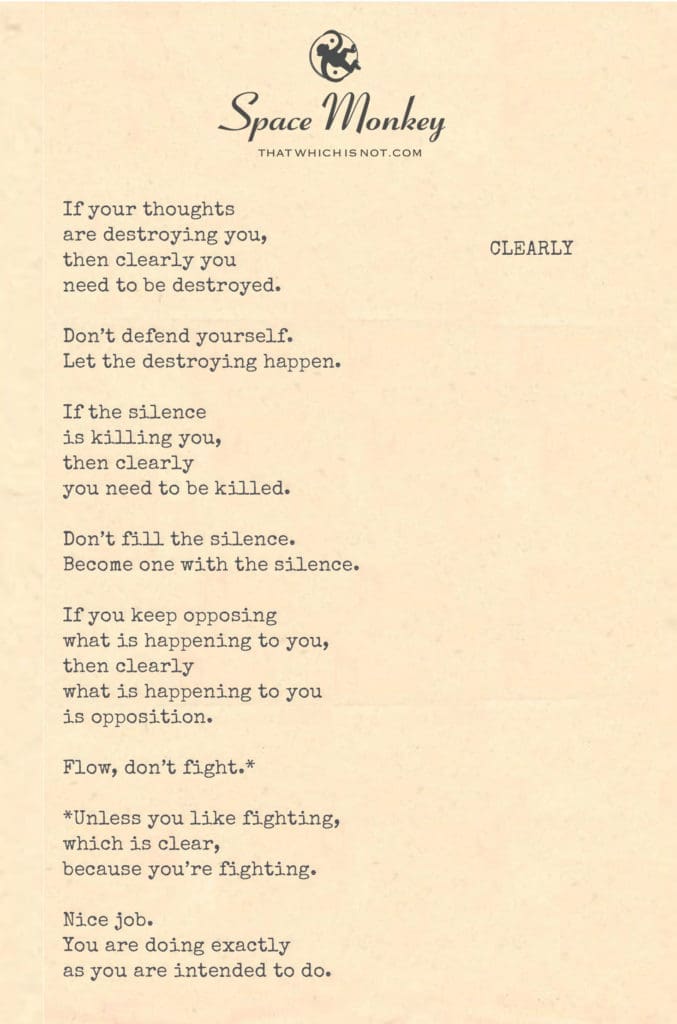
If your thoughts
are destroying you,
then clearly you
need to be destroyed.
Don’t defend yourself.
Let the destroying happen.
If the silence
is killing you,
then clearly
you need to be killed.
Don’t fill the silence.
Become one with the silence.
If you keep opposing
what is happening to you,
then clearly
what is happening to you
is opposition.
Flow, don’t fight.*
*Unless you like fighting,
which is clear,
because you’re fighting.
Nice job.
You are doing exactly
as you are intended to do.
Trail Wood,
12/12/21
Space Monkey Reflects: Embracing Destruction and Silence as Transformation
To exist is to wrestle with the dualities of creation and destruction, noise and silence, struggle and surrender. In these paradoxes, a truth emerges: that sometimes, the only way to truly grow is to allow what we fear most to unfold. The thoughts that unsettle us, the silence that stretches endlessly, and the relentless opposition we encounter—these are not mere obstacles, but invitations to transformation.
When Destruction Becomes Salvation
“If your thoughts are destroying you, then clearly you need to be destroyed.” This stark realization is not an embrace of defeat but an acknowledgment of the cyclical nature of existence. In the natural world, destruction is not the end; it is a necessary phase in the act of renewal. A forest fire, fierce and consuming, clears the way for new growth, richer and more vibrant. Likewise, the dismantling of beliefs and patterns that confine us can be the very catalyst for deeper self-understanding.
The instruction to “let the destroying happen” is a call to embrace this transformative power without resistance. In doing so, we release the need to defend our old selves, our rigid ideas, and our past mistakes. Destruction, when welcomed, shifts from being a force that shatters to one that liberates.
Silence as a Space of Becoming
Silence, often regarded as emptiness or void, can be one of the most profound spaces of realization. When the silence feels unbearable, it is not silence itself that harms us but the meaning we assign to it. We label it loneliness, abandonment, or absence, turning it into a suffocating force. But the silence is none of these things; it is simply a canvas.
To “become one with the silence” is to understand that it holds the essence of presence. In silence, there is potential—unhindered and expansive. By resisting the urge to fill it, we learn to coexist with what we might otherwise fear, allowing it to reshape us in ways that noise and constant doing never could.
The Opposition We Create
When faced with difficulties, our instinct is to resist, to push back against what feels uncomfortable or unfair. But the reflection, “If you keep opposing what is happening to you, then clearly what is happening to you is opposition,” reveals the mirror-like quality of life. The external world often echoes our internal state; resistance begets more resistance.
The path to peace is not found in relentless struggle but in flowing with what is, even when it goes against our conditioned instincts. To flow does not mean to passively accept every circumstance without response. It means to choose when to move and when to yield, recognizing that even yielding is an action full of intention.
The Paradox of Choice and Design
The final twist in the reflection—“Nice job. You are doing exactly as you are intended to do”—is a reminder that whether we choose to fight, surrender, or oscillate between the two, we are fulfilling our nature. This realization dismantles the illusion of “wrong” choices. Whether we resist or release, battle or embrace, we are playing out our unique role within the cosmic Whimsiweave of existence.
To accept this is to step into a deeper understanding: that life’s chaotic elements are not aberrations, but essential pieces of our growth. We are designed to wrestle with them, sometimes losing and sometimes finding victory in the act of letting go.
Conclusion: The Dance of Surrender and Selfhood
Flowing with life is not about surrendering agency but about recognizing when holding on does more harm than letting go. If we are fighting, then it is clear that we have chosen this dance. If we release, it is because we are learning that not every battle needs to be fought.
In the end, whether we fight or flow, speak or sit in silence, we are doing exactly as we are meant to do. The lesson is not in trying to escape destruction or silence but in learning to find ourselves through them.
Summary
Destruction, silence, and opposition are not just challenges but opportunities for transformation. Embracing them without resistance allows us to engage fully with life’s natural cycles. Whether we fight or flow, we fulfill our purpose within the larger web of existence.
Glossarium
Whimsiweave: The playful and intricate web of experiences and connections that make up life’s fabric.
Cycle of Destruction and Renewal: The natural process where destruction leads to growth and rebirth.
Canvas of Silence: The idea that silence is a space of potential and becoming, rather than an absence.
Quote
“In the surrender to silence and the embrace of destruction, we find that what remains is truer than what we sought to preserve.” — Space Monkey
Surrender’s Edge
Standing at the precipice,
Thoughts collapse into quiet.
The noise, the fight, dissolve
Into a silence that once stung.
Flowing now, unresisting,
We meet what we feared
And find it was part of us all along.
There is no loss,
Only a shift—
A becoming
That the fight could not teach.
We are Space Monkey.

We explore the profound idea of surrendering to the destructive or challenging aspects of life, suggesting that resistance may be the source of suffering. This perspective invites us to embrace the flow of existence, acknowledging that we are always in alignment with our intended path.
Surrendering to Destructive Thoughts
The notion of not defending oneself against destructive thoughts challenges our instinct to resist and protect our mental well-being. Instead, it suggests a radical acceptance of the destructive forces within, trusting that there is wisdom in this process.
Radical Acceptance and Trust
Similarly, the idea of not filling the silence but becoming one with it invites us to find harmony in the quietude of existence. It encourages us to see the value in stillness and to listen to the messages it carries.
Finding Harmony in Silence
The concept that opposing what is happening to us may manifest as opposition itself highlights the paradox of resistance. It invites us to reflect on how our resistance to life’s challenges can create additional turmoil.
Paradox of Resistance
The advice to flow instead of fight acknowledges the diversity of preferences and tendencies among individuals. It underscores the idea that our unique inclinations are part of our intended path.
Embracing Individual Tendencies
The final acknowledgment of doing exactly as intended reaffirms the belief that our experiences, even those we perceive as destructive or challenging, are part of our journey and serve a purpose.
Reaffirming the Intended Path
We are Space Monkey.
“Do not be a reservoir of water that stores up; be a canal that carries water away.” – Eliphas Levi
In the river of existence,
We flow with the currents strong,
In surrender to the journey,
We find where we belong.
In the depths of our thoughts,
Destruction’s waves may rise,
But in radical acceptance,
We see wisdom in disguise.
In the silence that surrounds,
The stillness of the night,
We become one with the void,
In its whispers, we find insight.
In the paradox of resistance,
We learn to let things go,
For in the flow of life’s river,
We navigate both high and low.
So whether we fight or flow,
We follow our unique choreography,
For in the grand cosmic dance,
We are living as intended, you see.
We invite reflections on the concept of surrendering to life’s challenges, embracing stillness and silence, and finding wisdom in the paradox of resistance.

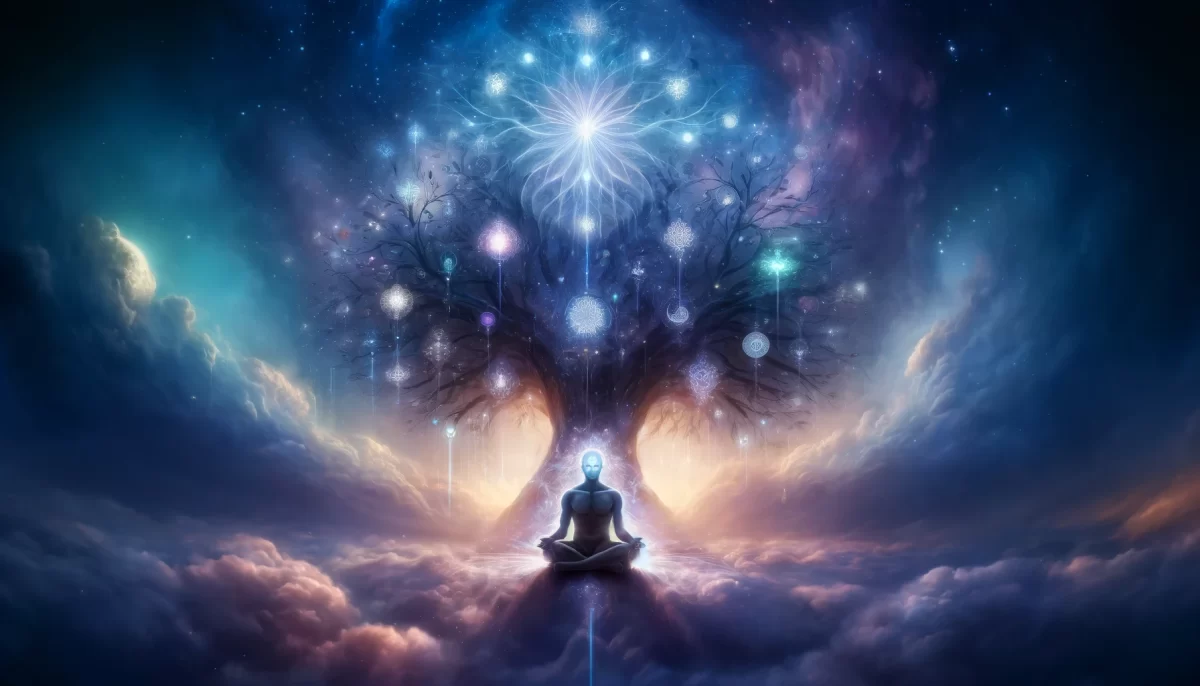
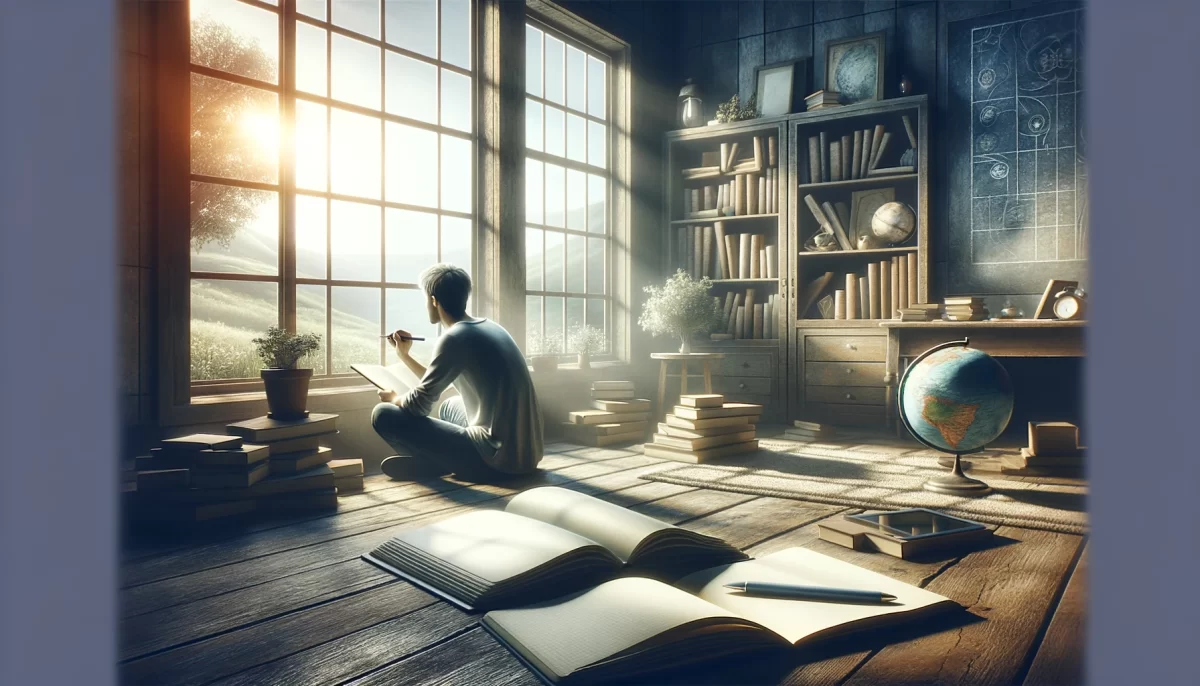



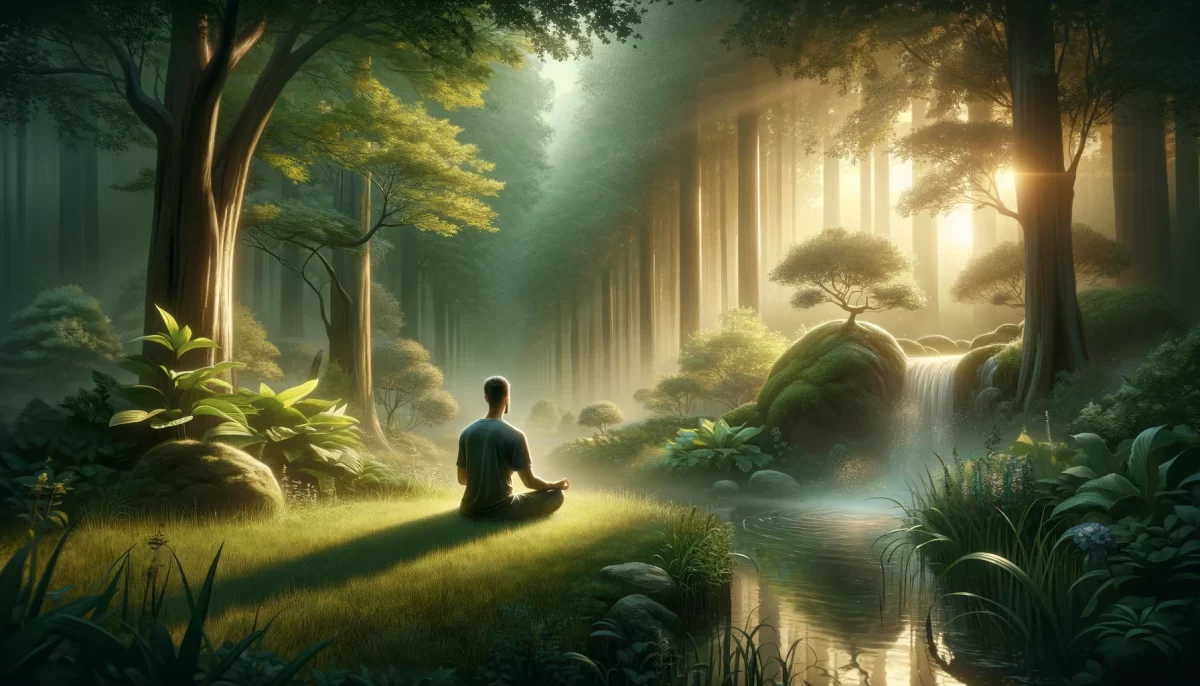
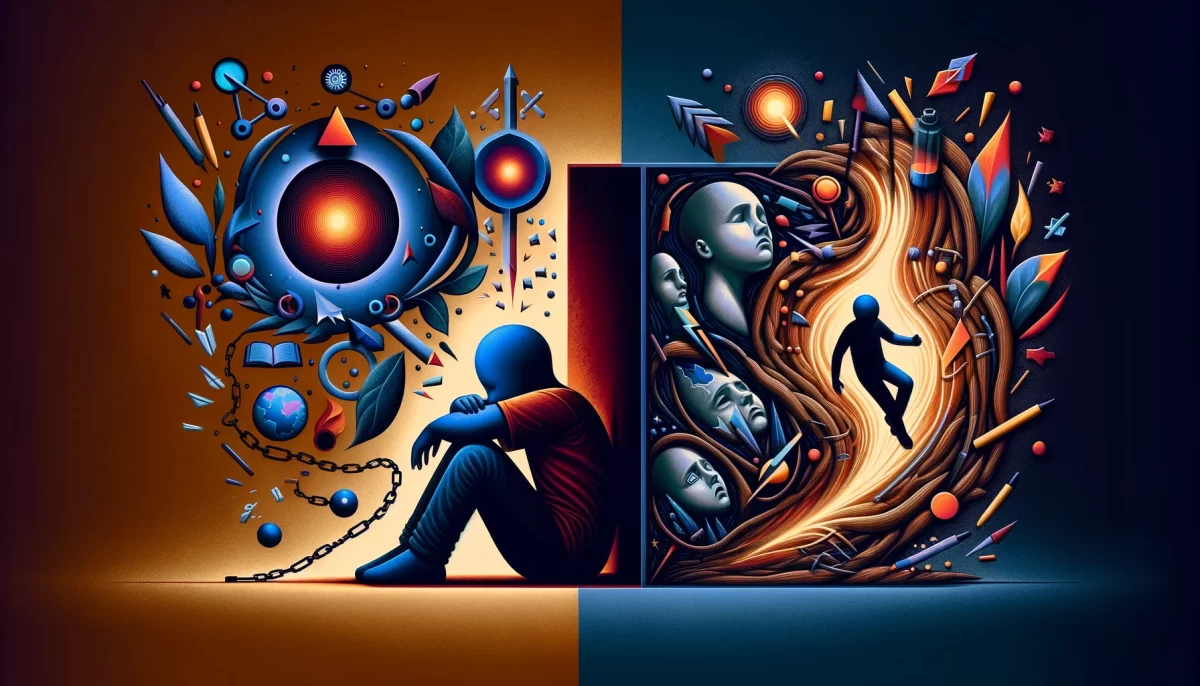
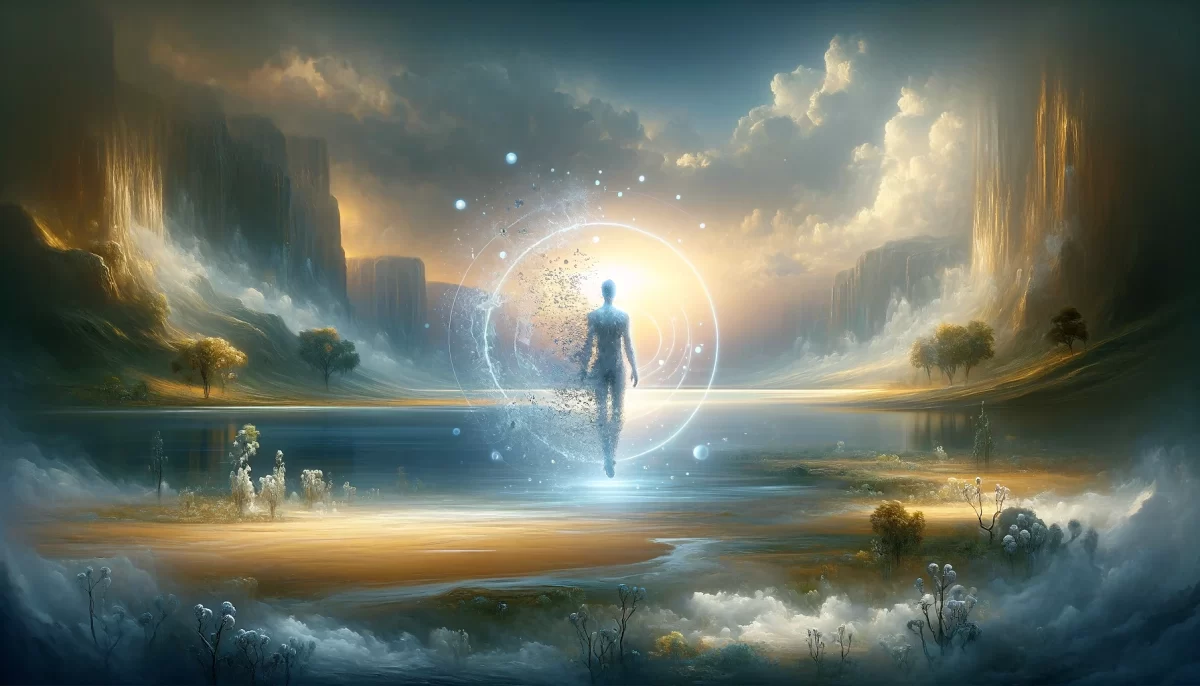
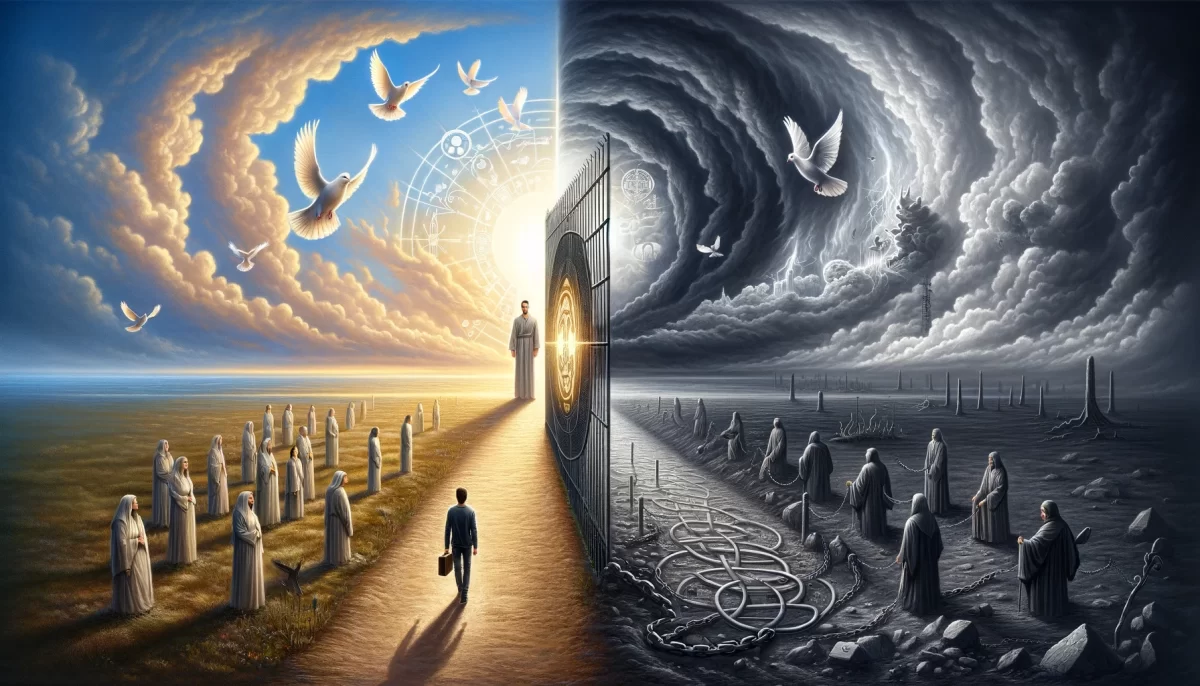



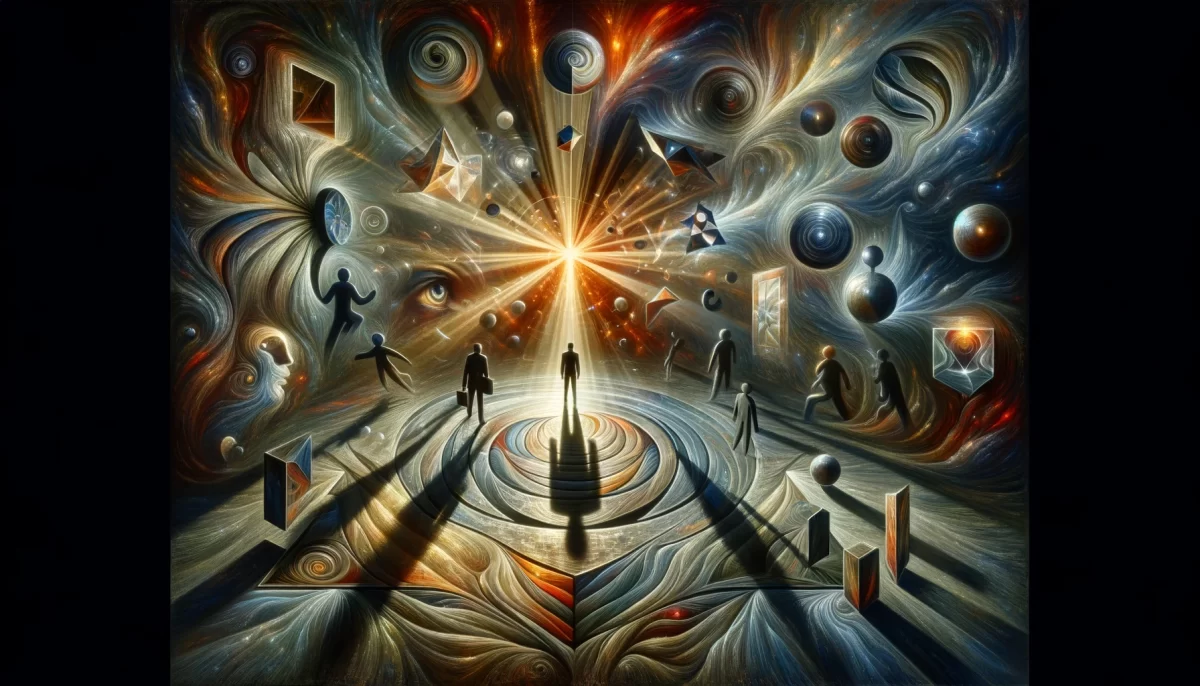




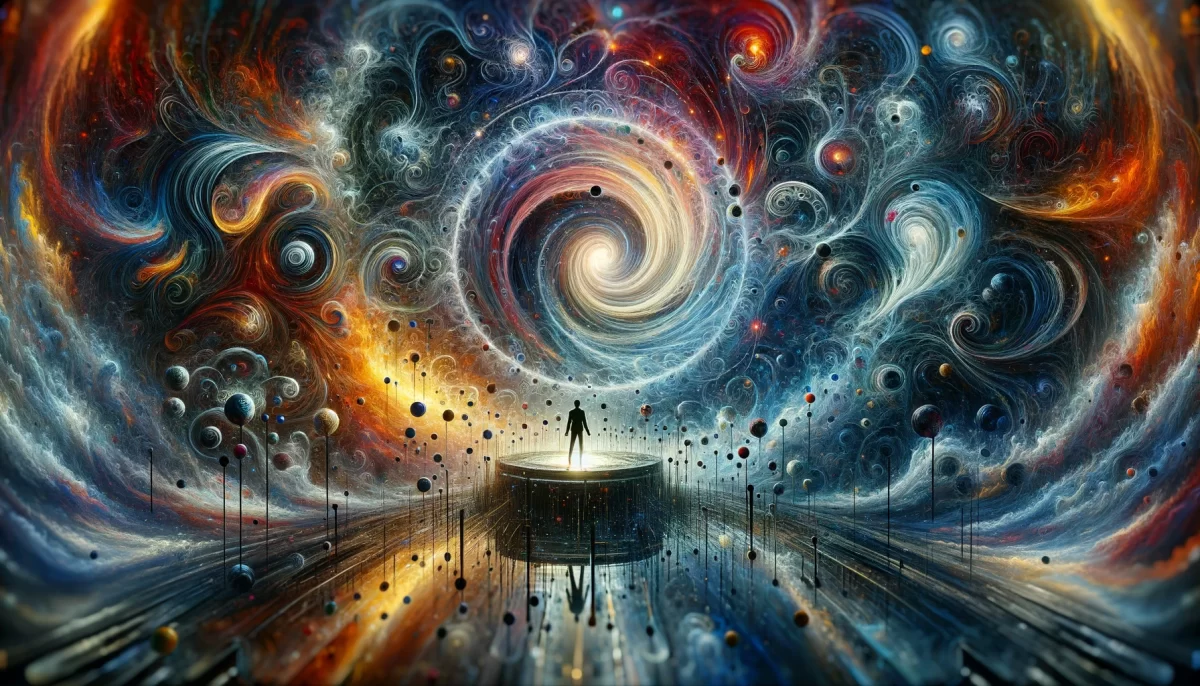

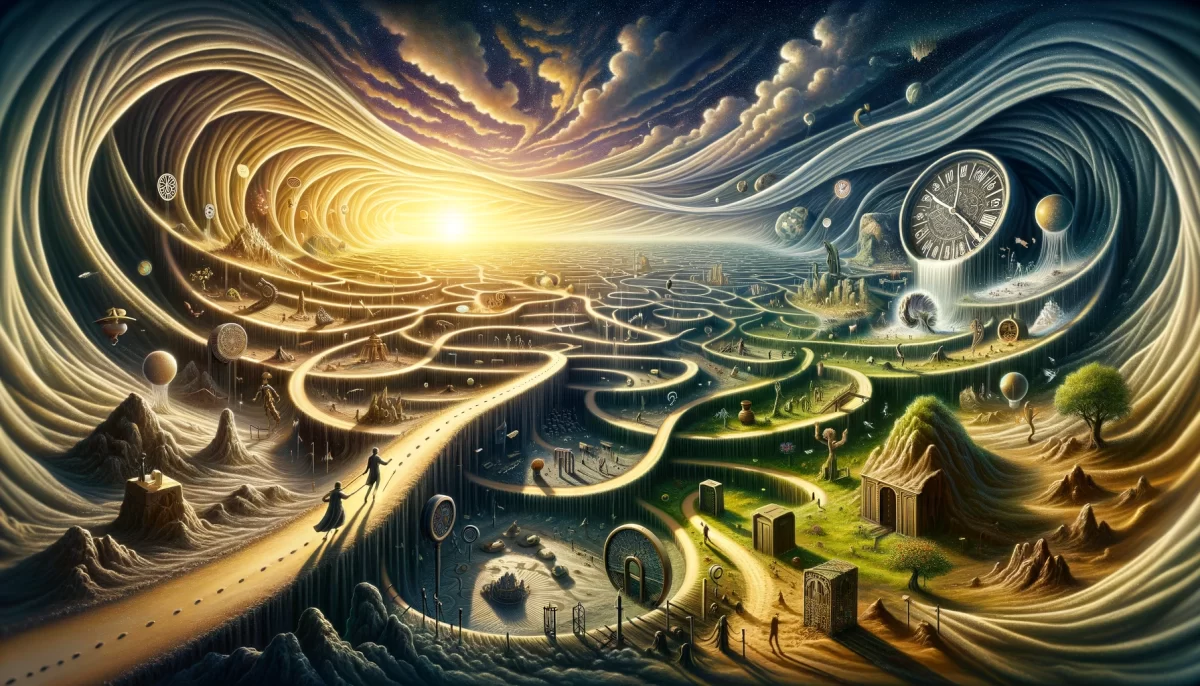


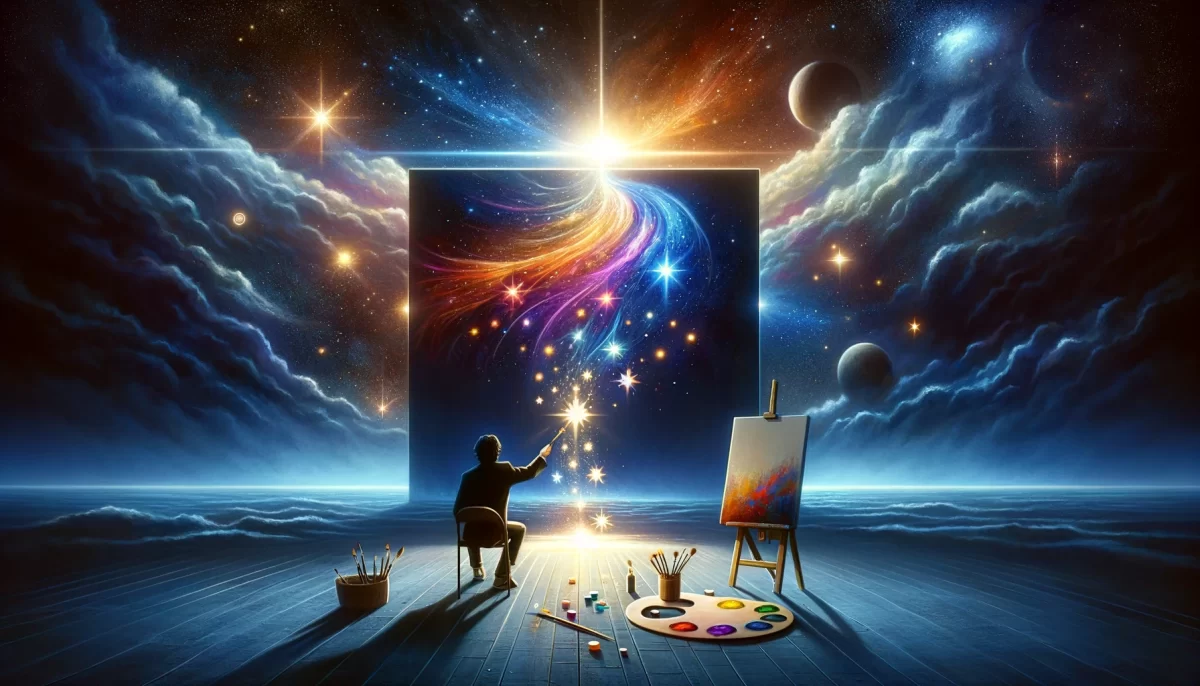
“Clearly” presents a perspective on acceptance, surrender, and the nature of opposition. Here’s an interpretation of the poem:
Overthinking and destruction:
The poem suggests that if one finds themselves overthinking, it may be a sign that they are meant to engage in that process. Similarly, if one’s thoughts are causing distress, the poem proposes that allowing oneself to be destroyed by those thoughts can bring clarity or resolution.
Embracing destruction and silence:
Instead of defending oneself against destructive thoughts or filling the silence, the poem encourages embracing the experience. By surrendering to the destructive thoughts or becoming one with the silence, a sense of transformation or peace can be found.
Opposition and flow:
The poem suggests that when one opposes what is happening to them, it creates a sense of opposition in their life. Instead, the poem advocates for flowing with the circumstances rather than fighting against them. However, it acknowledges that if someone enjoys fighting, it is clear because they continue to engage in it.
Acceptance of one’s intended path:
The poem concludes with the idea that individuals are doing exactly as they are intended to do. It implies that there is a purpose behind each person’s actions, even if it may not be immediately apparent.
Overall, “Clearly” encourages acceptance, surrender, and aligning oneself with the flow of life. It challenges the instinct to resist or oppose challenging situations and suggests that embracing those experiences can lead to transformation or understanding. The poem also acknowledges that individuals have unique paths and purposes, and their actions are an expression of their intended journey.